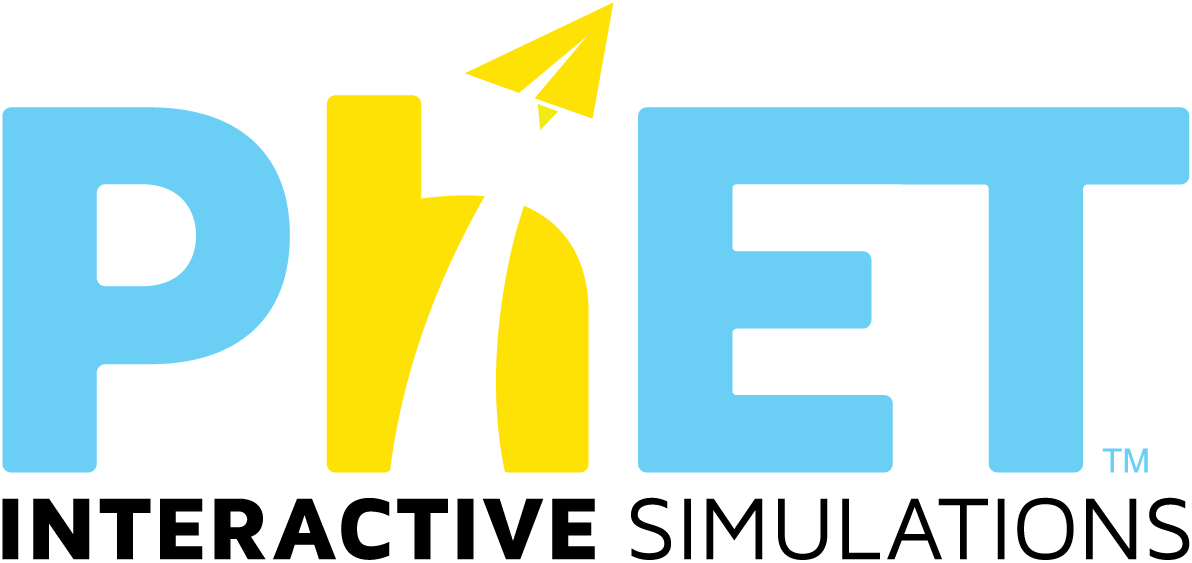334 rezultate ale căutării corespund cu Middle School.
Simulări
- Adunarea vectorilor (HTML5)
- Adunarea vectorilor: Ecuații (HTML5)
- Analiză matematică - grafice (HTML5)
- Aritmetic (HTML5)
- Aruncări cu moneda cuantică (HTML5)
- Axa numerelor: numere întregi (HTML5)
- Axa numerelor: Operații (HTML5)
- Axa numerelor - distanța (HTML5)
- Baloanele si Electricitatea Statică (HTML5)
- Baloanele si Electricitatea Statica
- Baloane şi plutirea
- Battery-Resistor Circuit
- Bazele exprimării genetice (HTML5)
- camp e
- Centru și variabilitate (HTML5)
- Cercul trigonometric (HTML5)
- Kit Construcție Circuite: Curent Continuu - Laborator Virtual (HTML5)
- Compară numerele (HTML5)
- Concentrația (HTML5)
- Conductivitate
- Construiește Aria (HTML5)
- Construiește molecula (HTML5)
- Construiește o fracție (HTML5)
- Construiește un atom (HTML5)
- Construiește un nucleu (HTML5)
- Crearea funcțiilor (HTML5)
- Crearea funcțiilor: bazele (HTML5)
- Densitatea (HTML5)
- Dezintegrare alfa
- Dezintegrare beta
- Difuzie (HTML5)
- Distribuții de eșantionare pentru proiectile (HTML5)
- Echilibristică (HTML5)
- Ecuații chimice echilibrate (HTML5)
- Efectul de seră (HTML5)
- Efectul fotoelectric
- Energia în skatepark (HTML5)
- Energia în skatepark: Baze teoretice (HTML5)
- Explorează egalități (HTML5)
- Explorează egalități: bazele (HTML5)
- Explorează egalități: două variabile (HTML5)
- Fisiune nucleară
- Forme de energie -transformări energetice (HTML5)
- Forțe și mișcare - noțiuni de bază (HTML5)
- Fourier: Crearea de unde (HTML5)
- Fracții: egalități (HTML5)
- Fracții: introducere (HTML5)
- Fracții: numere mixte (HTML5)
- Frecarea (HTML5)
- Gaze - Introducere (HTML5)
- Generator electric (HTML5)
- Geometria moleculelor (HTML5)
- Geometria moleculelor: elemente de bază (HTML5)
- Gravitație și orbite (HTML5)
- Hockey Electric
- Ia un zece (HTML5)
- Interacțiuni atomice (HTML5)
- Interferența undelor (HTML5)
- Introducere - modelul ariei (HTML5)
- Izotopii și masa atomică (HTML5)
- Împrăștierea Rutherford (HTML5)
- Încadrearea curbei (HTML5)
- Înmulțirea - modelul ariei (HTML5)
- Joc de datare radioactivă
- Jocul numerelor (HTML5)
- John Travoltaj (HTML5)
- Kit de construcție circuite c. a. (HTML5)
- Kit de construcție circuite c. a.- Laborator virtual (HTML5)
- Laborator Ciocniri (HTML5)
- Laborator condensatoare noțiuni de bază (HTML5)
- Laborator Date Proiectile (HTML5)
- Laborator electromagnetism Faraday (HTML5)
- Laborator Forța gravitațională (HTML5)
- Laborator Forța gravitațională: noțiuni introductive (HTML5)
- Laborator pentru legea lui Beer (HTML5)
- Laborator - studiul pendulului (HTML5)
- Laboratorul cu condensatoare
- Laboratorul Electromagnetic al lui Faraday
- Legea lui Coulomb (HTML5)
- Legea lui Faraday (HTML5)
- Legea lui Hooke (HTML5)
- Legea lui Ohm (HTML5)
- Legile lui Kepler (HTML5)
- Locul de joacă al proporțiilor (HTML5)
- Magneți și electromagneți (HTML5)
- Magnet și busolă (HTML5)
- Mase și resorturi (HTML5)
- Mase și resorturi - noțiuni de bază (HTML5)
- Mașina Galton - Probabilități (HTML5)
- Măsurări cuantice (HTML5)
- Medie: împarte în mod egal (HTML5)
- Mișcarea proiectilelor (HTML5)
- Mişcarea cu frecare
- Mişcarea pe planul înclinat
- Modele ale atomului de hidrogen (HTML5)
- Modelul ariei în algebră (HTML5)
- Modelul ariei - zecimale (HTML5)
- Molaritate (HTML5)
- Moleculele și lumina (HTML5)
- Neuronul (HTML5)
- Optica geometrică - Noțiuni de bază (HTML5)
- Optică geometrică (HTML5)
- Patrulatere (HTML5)
- Perechi de numere (HTML5)
- Planul înclinat
- Plutirea corpurilor (HTML5)
- Plutirea corpurilor: Noțiuni de bază (HTML5)
- Polaritatea moleculelor (HTML5)
- Potrivirea fracțiilor (HTML5)
- Proprietățile gazului (HTML5)
- Raportul și proporția (HTML5)
- Reactanți, Produși și Resturi (HTML5)
- Reacţie reversibilă
- Refracția luminii (HTML5)
- Regresia celor mai mici pătrate (HTML5)
- Reprezentarea dreptei în plan (HTML5)
- Reprezentarea dreptelor (HTML5)
- Reprezentarea ecuațiilor de gradul al doilea (HTML5)
- Rezistența unui conductor (HTML5)
- Sarcini și câmpuri electrice (HTML5)
- Scara pH (HTML5)
- Scara pH: noțiuni de bază (HTML5)
- Schimb de expresii (HTML5)
- Selecția naturală (HTML5)
- Semnal Circuit
- Sistemul meu solar (HTML5)
- Soluții acido-bazice (HTML5)
- Spectrul corpului negru (HTML5)
- Stări de agregare (HTML5)
- Stări de agregare: Noțiuni de bază (HTML5)
- Sub presiune (HTML5)
- Travoltaj
- Kit construcție circuite: curent continuu (HTML5)
- Unde - Introducere (HTML5)
- Unde în fire (HTML5)
- Undele Radio
- Valoare per unitate (HTML5)
- Vederea în culori (HTML5)
- Voltaj Baterie
- Molecule Polarity
- Neon Lights & Other Discharge Lamps
- Eating & Exercise
- Equation Grapher
- Estimation
- Fluid Pressure and Flow
- Forces in 1 Dimension
- Fourier: Making Waves
- Gene Expression - The Basics
- Gene Machine: The Lac Operon
- Glaciers
- The Greenhouse Effect
- Models of the Hydrogen Atom
- Ladybug Motion 2D
- Lasers
- Lunar Lander
- Masses & Springs
- Maze Game
- Membrane Transport (HTML5)
- Membrane Channels
- Microwaves
- Motion in 2D
- The Moving Man
- Simplified MRI
- Optical Quantum Control
- Plate Tectonics
- Radiating Charge
- Reactions & Rates
- Resonance
- Ladybug Revolution
- Salts & Solubility
- Sound
- Sugar and Salt Solutions
- Torque
Activități
- Gas Properties-Inquiry Middle School
- Sound_Inquiry for Middle School
- Balloons and Static Electricity for Middle School
- Circuit inquiry for Middle school
- Conservation of Energy for Middle School
- Projectile investigation for Middle School
- Pendulum investigation for Middle School
- States of Matter for Middle School
- Gas Investigation for Middle School
- Ramp Middle School Inquiry
- Energy Skate Park for Middle School(Inquiry Based)
- Energy Skate Park Basics
- Middle School Math Sim Alignment
- Density Exploration
- NGSS Alignment Doc for Middle School targeted PhET Sims
- Air Resistance Lesson
- Forces and Motion Lesson
- Chemistry Theater
- Energy Skate Park Basics Lesson
- Natural Selection Lesson by UTeach
- Balloons and Static Electricity
- Density Lesson (with Putty Lab)
- Build an Atom
- Gravity and Orbits Lesson
- Experimental Design with Forces
- Hot Air Balloons Lesson
- Building Fraction Sense Using “Fractions Intro PhET Simulation”
- Wave Basics for Middle Schoolers
- Middle School - Electric Circuits
- States of Matter Simulation
- Two Types of Energy - Mass & Spring
- Build a Molecule
- States of Matter Simulation Lab
- Properties of Waves - Lab Guide
- Middle School and High School Common Core Alignment Document
- Pendulum variables
- Reactions and Rates
- Force introduction
- How do PhET simulations fit in my middle school program?
- Net force
- Investigating Net Force
- Middle School Science
- Heat it Up
- Mixing paint with ratios
- Using the area model with expressions
- Properties of representations of linear functions
- Color Vision pHet Lab
- Middle School - series and parallel circuits
- Describing Location and Movement
- Gas Laws
- Density-introduction
- Exploring EM Forces
- Molecules and Light-inquiry for high school
- Induction (high school version) (Inquiry Based)
- Inquiry Activity: Waves
- Pendulum Virtual Lab 2021
- Arbeitsblatt Natürliche Selektion
- Balanced and Unbalanced Forces - What Causes Acceleration
- Using PhET in High School Chemistry- all my activities in pdf
- the advantages of species physical appearances corresponding to living environment
- Speed of a Wave NGSS aligned
- Molarity Simulation
- Reaction Rates
- Isotopes
- Arithmetic Games (Inquiry Based)
- Sound Waves
- Energy Transfer
- PhET: Energy Forms Worksheet
- Basics of Electricity
- Homework Activity I
- Forces and Motion Basics Interactive Activity
- Pendulum Lab: What Affects the Period?
- PhET Lab States of Matter Basics
- Gravity Lab
- High School Inclusion Class Density Lab
- PhET Interactive Lab on pH
- Measurements of Density
- THE MOVING MAN: DISTANCE, DISPLACEMENT, SPEED & VELOCITY
- High School Chemistry 1 level Balancing Equations
- High School Chemistry 1 level: Limiting reagents
- Visual Nucleosynthesis [Basic High School]
- Collecting and analyzing density data
- Greenhouse effect activity
- PHET: Masses and Springs 2021
- High School Exploratory Lab for Balloons and Static Electricity
- Electric Fields of Dreams for High School Exploratory Lab
- Exploring the density of mysterious objects
- Float or Sink? An essay on the density of materials
- Conservation of Energy - conceptual
- Wave Interference- Waves (Sound and Light)
- Comparing the properties of different materials
- What Type of Light Bulb Should I buy for my Grandma?
- Projectile Motion
- Introduction to Waves: Liquid Matter, Sound, and Light
- Exploring Chemical Reactions and the Law of Conservation of Mass
- States of Matter - Lab Simulation - student procedures and questions
- Lesson Plan for Teaching Shapes of Molecule
- Induction (college homework version) (Inquiry Based)
- Bunny Blitz
- PhET Energy Forms and Changes Virtual Lab
- (BNCC) Comparando as propriedades de diferentes materiais
- Projectile Motion Discovery
- Geometric figures
- Colors, Bunnies and Wolves: does the strongest survive?
- Water Waves in an Electric Sink
- Simple Pendulum
- Opdrachten bij Reactanten, producten en resten
- Conservation of Energy Exploration with Skatepark Physics
- The Simple Pendulum- What affects the Period of the pendulum?
- Bending Light Student Worksheet
- Lens Inquiry
- Molecule Shapes Advanced
- Gravity Force Lab
- Investigating Forces and Motion Through Inquiry
- Exploring Stars and Blackbodies
- Experiment to determine relationship between wavelength, frequency and speed
- Ohm's Law Lab - Virtual
- Ray Diagrams for Concave and Convex Mirrors
- Electromagnetic Induction
- Making STABLE Atoms Lab
- Force and Motion Basics - Second grade
- Refraction
- Reactions and Rates: Learning Goals from the design team (Inquiry Based)
- Projectile Motion Lab #2
- Conservation of Energy (Energy Skate Park)
- Moving Man II: Acceleration vs. Time
- Moving Man I: Velocity vs. Time Graphs
- Charges and Fields
- Ohm's Law, Kirchhoff's Laws, Resistors in Parallel and Series Lab
- The Two-Plate Special
- Energy Forms and Changes
- Balancing equation
- Introduction to Current, Voltage, and Resistance
- Projectile Motion
- Bouncing Off the Walls
- Heat or temperature
- My Solar System
- Exploring the Energy Skate Park
- Newton's Second Law of Motion
- Charges and Charged Objects Investigation
- 'Lectronic Plates
- Pixel Peeping
- Moving Man Motion Graph Review
- Magnet and Compass
- Spring Force, Spring Constant and Elastic Potential Energy
- Heat or temperature?
- Build An Atom Guided Inquiry
- Introduction to the Gas Laws using PhET simulations
- Quest for the Coulomb Cup
- Cavendish Lab
- MS and HS TEK to Sim Alignment
- DC Circuit Lab
- Projectile Motion Worksheet
- Greased Lightning
- Introduction to the gas laws
- Harmonic oscillator
- Worlds of Wonder
- Beer's Law Lab: Introduction to Beer's Law
- Electric Field Hockey Post-Game Analysis
- Atomic Models and Spectroscopy
- Computer Simulations as a Tool to Assist Teaching Basics of Electromagnetism (Simulações Computacionais Como Ferramenta Auxiliar ao Ensino de Conceitos Básicos de Eletromagnetismo)


